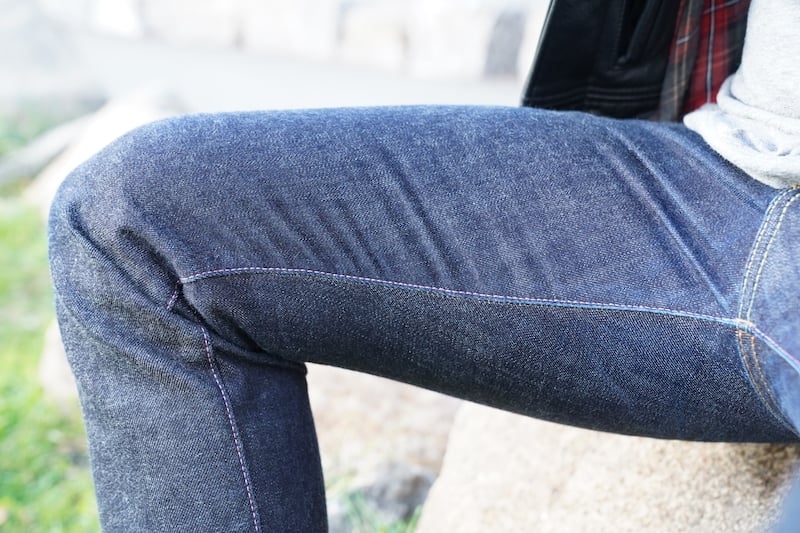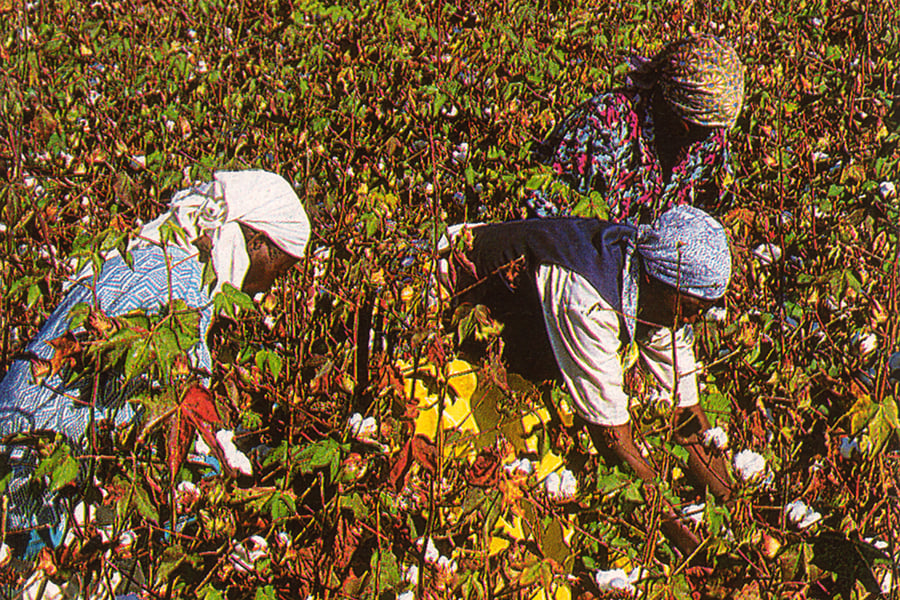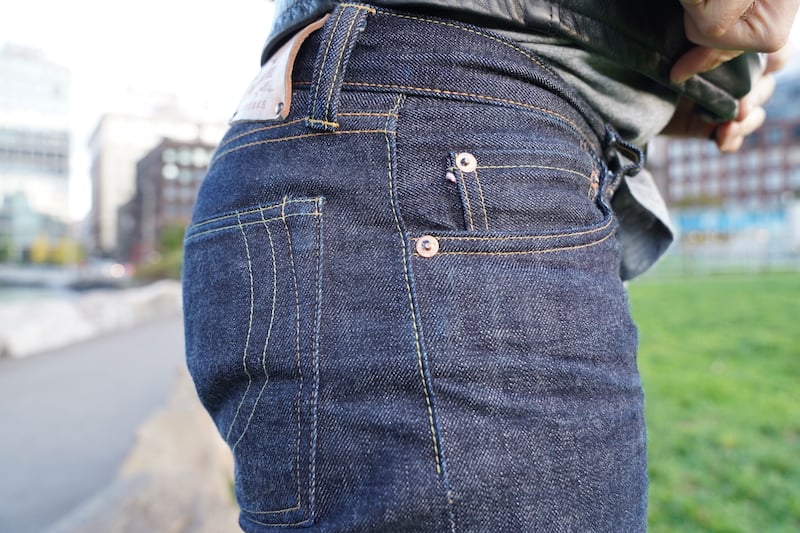Why Is Zimbabwe Cotton So Popular?
Zimbabwe cotton is often touted as one of the best cotton types in the world. Often by people selling it, sure, so they’re not unbiased, but you’ll also hear this from fashion aficionados from Japanese denimheads to wearers of fine Italian dress shirts. But is there anything special about Zimbabwe cotton? Or this hype and clever marketing?
We looked at oodles of research and interviewed Mehervan Sethi, the founder of Okayama Denim, to learn more about the pros and cons of this fabled cotton.
[Further Reading: The Best Selvedge Denim: 8 Solid Brands for Quality, Value, & Weirdness]
View this post on Instagram
Cotton 101
Starting with absolute basics, cotton is a natural fibre harvested from the Gossypium plant.
The cotton bud is the part of the plant that we’re most interested in, as it’s spun into yarn to make textiles. The traits of the cotton bud determine the favorable qualities of our cotton clothes.
What Makes One Type of Cotton Better Than Others?
Of the 50 known species of the cotton plant, humans only cultivate four. Their fiber quality is determined by the length, maturity, strength, and micronaire (cell wall thickness) of the fibers. Different species of cotton naturally grow different length fibers.
As consumers, we’re often only given two pieces of information:
- the length of the cotton fibre or staple, and
- the country or region of origin.
“The slightest change in yarn composition, when woven into a twill, can yield a completely different denim,” says Sethi. This is why producers of high-end cotton clothes place a lot of importance on a cotton’s place of origin.
Cotton Origin
Cotton from different regions has different characteristics. For example, American (mostly Texas) and Australian cotton will usually yield the kind of heavy texture denim that a lot of denim companies look for. Others, like Zimbabwe cotton, are longer staple and make for softer, shinier denim.

Cotton Staple Length
There are five standards for cotton length. Starting with very short staple cotton. They are sometimes referred to collectively as ‘desi’ cotton, Indian cotton, or old world cotton.
Medium staple cotton is a very common cotton for fabrics. It is most commonly known as Upland cotton or Mexican cotton.
Long and extra-long staple threads only come from the G. barbadense species and hybrids. Many consider extra-long staple (ELS) to be the most desirable. If you’re into raw denim, you’ll be familiar with jeans marketed as containing ELS cottons, like the Elephant 8 Supima Soft Selvedge.
Why Are Long Staple Threads So Important?
As mentioned above, length is only one of several important qualities of cotton fibre. According to Julian Roche, author of The International Cotton Trade, high ratings for strength, fineness, and maturity are just as, if not more indicative of quality than the staple length.
But marketing a product as an extra-long staple cotton is a great way to signal quality to the consumer. Length plays an important part in the overall quality: the longer fiber resists pilling, breaking and tearing. Long fibers produce products that are resilient and keep their form for a longer-lasting product.
Boutique companies like Okayama Denim use proprietary fabrics. They have a strong belief in “fabric first” and utilize custom cloth to fit the needs of the final denim product. So the quality and characteristics of their raw materials is paramount.
“When we’re looking to create a fabric that has some texture, but is also extremely soft, we may opt to bi-blend Texas cotton with a Pima cotton,” notes Sethi.
What separates high-end denim from mass marketed ESL cotton is the ability to find the right raw materials for specific use cases.
“If we want to re-engineer a classic pair of vintage jeans from the turn of the century, we would likely use a Zimbabwe, Pima, or even Giza cotton, which are all renowned for their long-staple nature,” says Sethi.
In these cases, every detail of the final product needs to be taken into consideration and the origin of the cotton is important.
What About Zimbabwe Cotton?
Zimbabwe cotton is just cotton that comes from Zimbabwe — there’s not one specific species, grade, or type of cotton that makes it special. Farmers grow all grades of cotton and many varieties of cotton.
So… Why is Zimbabwe it considered so great?
Because Zimbabwe has a very good climate for growing cotton. The climate produces a raw material that has unique qualities. The cotton is also hand-picked by farmers.
Cotton is similar to grape vines in that the final product is determined by the genetics of the plant, the location it’s grown, and specific conditions for that year’s harvest.
In Zimbabwe, small farms with little resources grow cotton, so it’s often hand-picked and hand-sorted before being graded.
Handing picking and sorting should separate the longest, strongest, most uniform, and most mature cotton fibers without damaging them. The logic is that hand-picked cotton from small shareholder farms is a higher quality than machine harvested cotton which may be damaged by the equipment.
It’s important to note that the reasons often listed for Zimbabwe cotton being “one of the best” — fiber structure, high luster, whitening, pliability and ease of dyeing — is true for other varieties of high-grade extra-long staple cotton.
However, according to Sethi:
Zimbabwe cotton, even when compared to other extra long staple cotton varieties, when woven as a denim twill yields a Selvedge that is closest to the Levi’s vintage jeans that the Japanese painstakingly wanted to recreate in Japan starting in the 80s.
Glossy Sheen
Hand Picking cotton has several positive knock-on effects. One being that the finish for the denim is better. When we start with a handpicked cotton that is smoother and has a higher luster, the finished fabric has a very glossy sheen. So it’s common to see products with Zimbabwe cotton described as having a “glossy sheen,” just like Full Count’s 1872 Chinos or Momotaro Jean’s G015-MZ.

What Are the Cons?
There is debate about the ethics of buying products made from Zimbabwe cotton. There are accusations that the government and cotton industry are corrupt. In 2005, there was a great debate on /r/rawdenim about the ethics of wearing clothes made from Zimbabwe cotton.
Activists in Zimbabwe have concerns about the use of insecticides for producing cotton. Hand picking puts farmers at a greater risk of exposure to harmful chemicals than using machines.
Picking cotton by hand is also very difficult. It makes for better quality, and it’s done because the farmers simply don’t have access to better equipment, but it’s worthwhile to weigh the benefits of hand-picked cotton vs. the reality of tough manual labor.
Wrapping Up
So is Zimbabwe cotton the premier cotton on the market? Honestly, it depends on the final product you’re looking for. It’s likely overkill for a pair of white cotton socks but there’s definitely an argument that it’s a must for creating innovative denim products or recreating classic denim jeans.
High-quality, incredibly soft cotton is produced in Zimbabwe and purchasing products made with Zimbabwe cotton may help small farms where eeking out a living is difficult. In the hands of experts amazing clothes are crafted with Zimbabwe cotton.












Join the Discussion